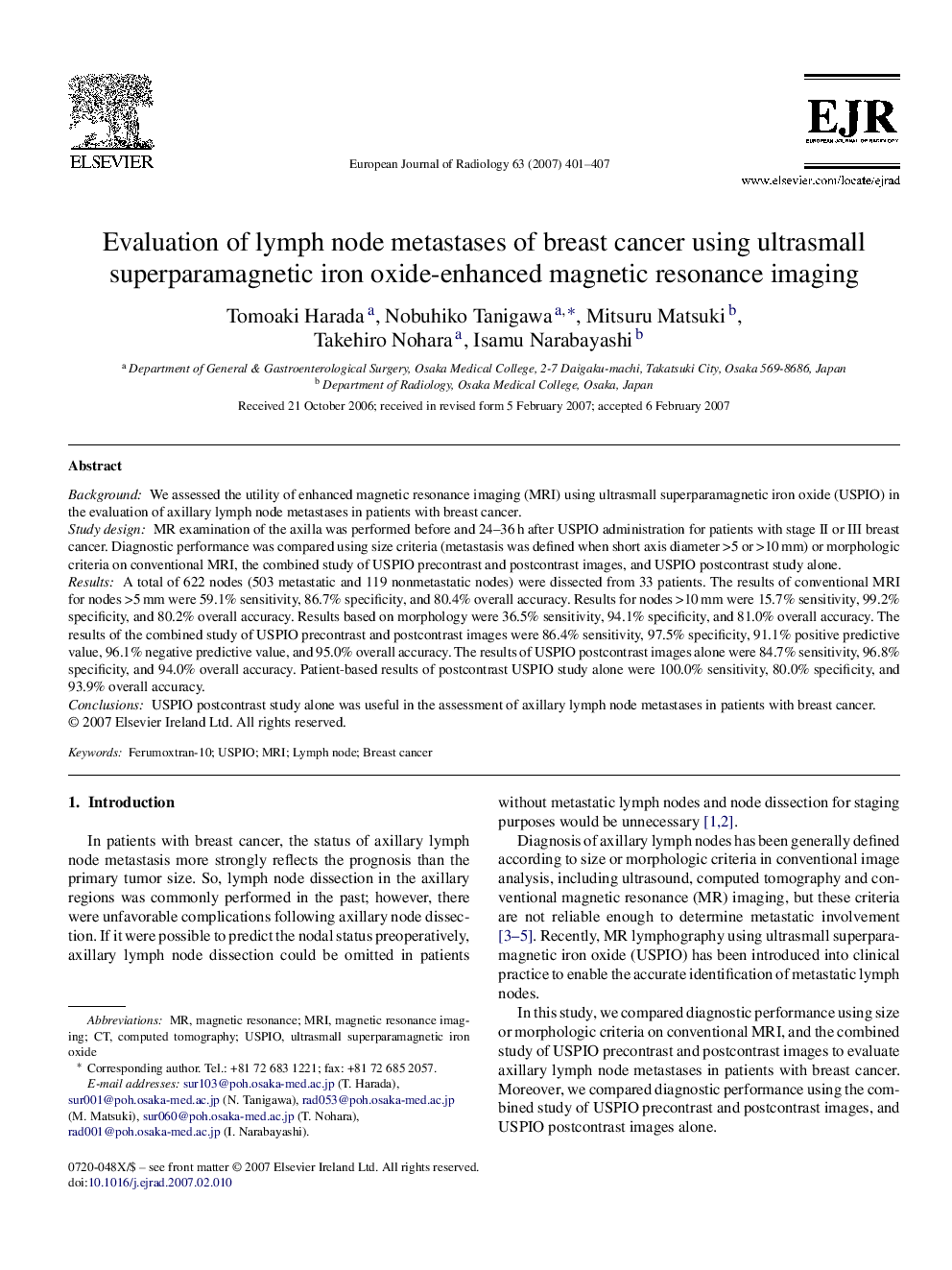| Article ID | Journal | Published Year | Pages | File Type |
|---|---|---|---|---|
| 4227991 | European Journal of Radiology | 2007 | 7 Pages |
BackgroundWe assessed the utility of enhanced magnetic resonance imaging (MRI) using ultrasmall superparamagnetic iron oxide (USPIO) in the evaluation of axillary lymph node metastases in patients with breast cancer.Study designMR examination of the axilla was performed before and 24–36 h after USPIO administration for patients with stage II or III breast cancer. Diagnostic performance was compared using size criteria (metastasis was defined when short axis diameter >5 or >10 mm) or morphologic criteria on conventional MRI, the combined study of USPIO precontrast and postcontrast images, and USPIO postcontrast study alone.ResultsA total of 622 nodes (503 metastatic and 119 nonmetastatic nodes) were dissected from 33 patients. The results of conventional MRI for nodes >5 mm were 59.1% sensitivity, 86.7% specificity, and 80.4% overall accuracy. Results for nodes >10 mm were 15.7% sensitivity, 99.2% specificity, and 80.2% overall accuracy. Results based on morphology were 36.5% sensitivity, 94.1% specificity, and 81.0% overall accuracy. The results of the combined study of USPIO precontrast and postcontrast images were 86.4% sensitivity, 97.5% specificity, 91.1% positive predictive value, 96.1% negative predictive value, and 95.0% overall accuracy. The results of USPIO postcontrast images alone were 84.7% sensitivity, 96.8% specificity, and 94.0% overall accuracy. Patient-based results of postcontrast USPIO study alone were 100.0% sensitivity, 80.0% specificity, and 93.9% overall accuracy.ConclusionsUSPIO postcontrast study alone was useful in the assessment of axillary lymph node metastases in patients with breast cancer.
